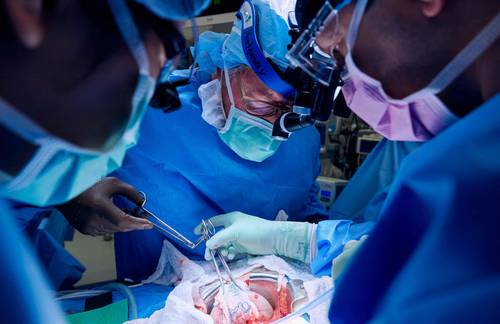- Thu. Apr 25th, 2024
Latest Post
Woman Receives Pig Kidney Transplant Using Innovative Technique Just in Time
A New Jersey woman, Lisa Pisano, was on the brink of death due to heart and kidney failure. Traditional transplant methods were not an option for her due to her…
Macron Warns of the Potential Demise of Europe in the Modern Day
During his speech today, French President Emmanuel Macron emphasized the need for a stronger and more integrated European defense in light of the changing security landscape. Macron highlighted the importance…
Exoplanet Could Harbor Boiling Hot Ocean
The gas atmosphere composition of the planet TOI-270 d is known, although there are different interpretations of its surface. The James Webb Space Telescope has provided precise details about the…
High demand for vehicle repair shops leads to wait times exceeding 10 days
Vehicle repair shop owners in Dubai, Sharjah, and Ajman are feeling the pressure to handle the increased demand for car repairs following the recent heavy rains in the country. Workshop…
El Mencho’s Brother, Abraham Oseguera Cervantes, Arrested in Mexico
The National Guard of Mexico made a significant arrest that dealt a blow to Nemesio Oseguera Cervantes, also known as ‘El Mencho’, who is the leader of the powerful Jalisco…
Researchers Create Diamonds In Minutes Through Liquid Metal Process
A new innovation in diamond production has significant implications for various industries. Traditionally, diamonds take billions of years to form naturally and weeks to be produced synthetically. However, researchers have…
5 natural remedies to cleanse the kidneys
To naturally improve kidney health through a healthy diet, it is recommended to drink plenty of water and consume potassium-rich fruits such as bananas, grapes, oranges, or cranberries. These practices…
Potential Risks of Cell Phone Use Before Bedtime
To maintain a healthy life, experts recommend a balance between exercise, a balanced diet, and a good amount of rest. However, with the advancement of technology, many people have developed…
Half of the Anbar Power Station is now complete
During his visit to the Anbar governorate, Iraqi Prime Minister Muhammad Shiaa Al-Sudani visited the Anbar combined power station project in the Euphrates district. Al-Sudani held a meeting at the…
Trial for Harvey Weinstein’s rape conviction to be re-tried after overturning
The New York Supreme Court has overturned the sex crime conviction of Harvey Weinstein, the powerful Hollywood producer whose downfall became symbolic of the #MeToo movement. The panel of judges,…




:quality(75)/cloudfront-us-east-1.images.arcpublishing.com/elcomercio/VFWW7ZFY6VFS3KVTK3RM6ZGBKY.jpg)